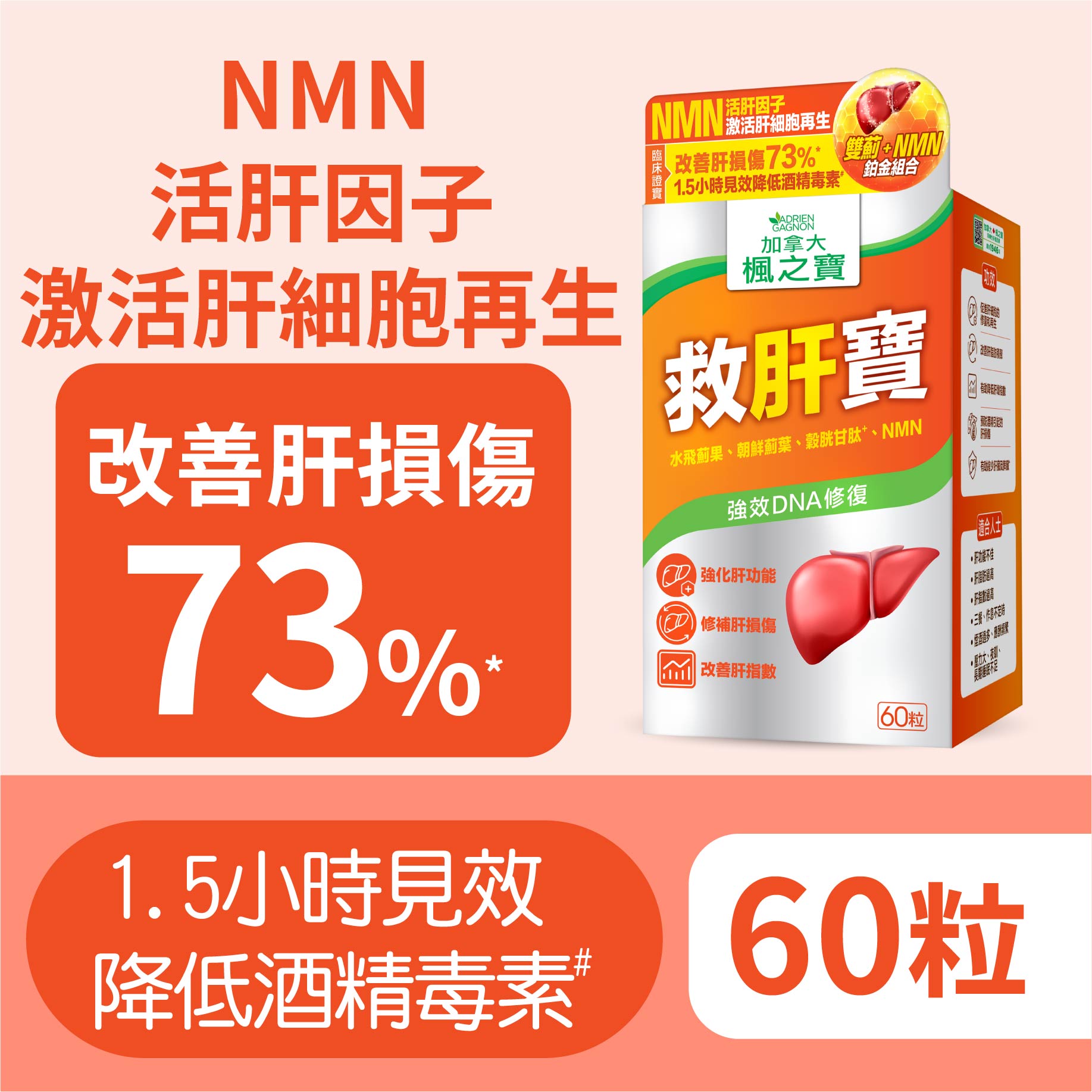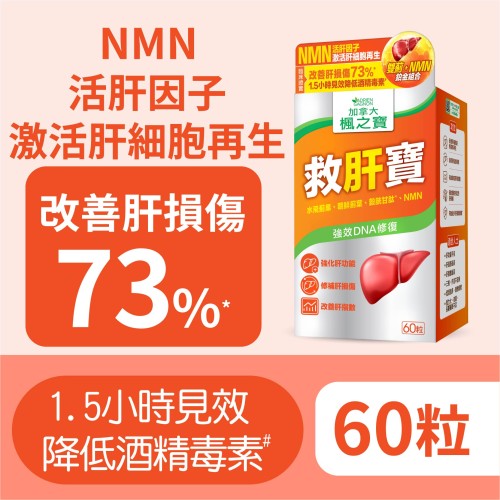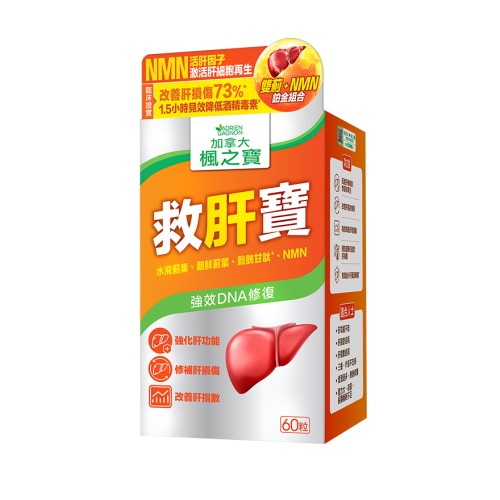
hot
-
- Clinically proven to reduce liver index and improve liver damage by 73% in 4 weeks.*
- Effective in 1.5 hours, reduces alcohol toxins#
- Promotes the repair and regeneration of liver cells
- Improves liver fat accumulation
- Helps reduce liver damage index
- Prevents alcohol-induced liver damage
- Helps reduce liver and spleen size
- Silybum Marianum Fruit: Clinically proven to reduce liver damage index (AST, ALT) by 30% and 41% in 4 weeks, significantly improving liver damage by 73%.*
- Cynara Scolymus Leaf: Helps protect the liver and alleviate / prevent alcohol-induced liver damage.
- NMN: Promotes liver energy metabolism and reduces the risk of liver fat accumulation. Encourages liver cell repair and regeneration ; Protecting liver health.
- Glutathione: Helps improve liver fat issues. (each serving contains 100 mg of glutathione.)
- Broccoli Sprouts: Contains sulforaphane (SFN) which can reduce liver damage index.
- Turmeric Rhizome: Studies show it can restore antioxidants (GSH) reduced by alcohol, preventing alcohol-induced liver damage.** ; Improves liver fat issues by 74%^ and prevents or slows more severe liver problems.
- White Mulberry Leaf: Clinically proven that Morus alba leaf extract (DNJ) helps reduce starch digestion and absorption by 42%.*** ; Effective in 1.5 hours to reduce acetaldehyde levels by 42%.#
- Key Ingredients: Silybum Marianum Fruit, Cynara Scolymus Leaf, Nicotinamide Mononucleotide (NMN 200mg per serving), Glutathione, Broccoli Sprouts, Turmeric Rhizome, White Mulberry Leaf
- Suitable for • Poor liver function • High liver fat • Elevated liver enzymes • Irregular meal and sleep patterns • Excessive smoking and drinking, frequent socializing • High stress, night shifts, long-term sleep deprivation Directions: Adults take 2 capsules daily, with a meal. *BALL, K. R., & KOWDLEY, K. V. (2005). JOURNAL OF CLINICAL GASTROENTEROLOGY, 39(6), 520–528. **BAO, W., LI, K., RONG, S., YAO, P., HAO, L., YING, C., … LIU, L. (2010). JOURNAL OF ETHNOPHARMACOLOGY, 128(2), 549–553. *** JÓZEFCZUK, J., MALIKOWSKA, K., GLAPA, A., STAWIŃSKA-WITOSZYŃSKA, B., NOWAK, J. K., BAJERSKA, J., … WALKOWIAK, J. (2017). ADVANCES IN MEDICAL SCIENCES, 62(2), 302–306. ^ PANAHI, Y., KIANPOUR, P., MOHTASHAMI, R., JAFARI, R., SIMENTAL-MENDÍA, L., & SAHEBKAR, A. (2017). DRUG RESEARCH, 67(04), 244–251. # LIANG H.W., YANG T.Y., TENG C.S. ET AL. (2021). INT J MED SCI. 2021 JAN 1;18(1):53-64
You May Also Like
Chat With Us



